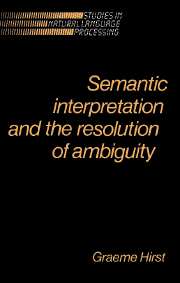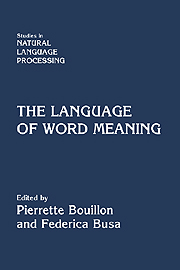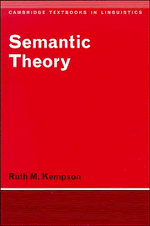Semantic Interpretation and the Resolution of Ambiguity
Semantic interpretation and the resolution of ambiguity presents an important advance in computer understanding of natural language. While parsing techniques have been greatly improved in recent years, the approach to semantics has generally improved in recent years, the approach to semantics has generally been ad hoc and had little theoretical basis. Graeme Hirst offers a new, theoretically motivated foundation for conceptual analysis by computer, and shows how this framework facilitates the resolution of lexical and syntactic ambiguities. His approach is interdisciplinary, drawing on research in computational linguistics, artificial intelligence, montague semantics, and cognitive psychology.
Reviews & endorsements
'Semantic interpretation is an interesting and enjoyable read. Hirst combines perceptive analyses with commonsense attitudes … in an engaging way, and he has made a valuable attempt to synthesize some attractive, but hitherto distinct ideas about language interpretation … Many of the examples are a delight, and instructive not least because memorable.' Computational Linguistics
'The book gains very much by [Graeme Hirst's] ability to concentrate on important problems, by the clarity of his expositions and also by his open-minded presentation of points his approach is not yet able to solve.' Studies in Language
Product details
No date availableAdobe eBook Reader
9780511871047
0 pages
0kg
Table of Contents
- Preface
- 1. Introduction
- 2. Semantic interpretation
- 3. The Absity semantic interpreter
- 4. Lexical disambiguation
- 5. Polaroid words
- 6. Structural disambiguation
- 7. The semantic enquiry desk
- 8. Conclusion
- 9. Speculations, partially baked ideas, and exercises for the reader
- References
- Index of names
- Index of subjects.






